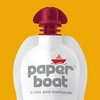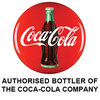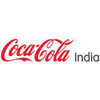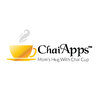Filter interviews by
Pearl Beverages Interview Questions and Answers
11 Interview questions
A water treatment plant is a facility that processes raw water to make it safe for drinking, industrial use, and other purposes.
Removes impurities and contaminants from raw water
Uses processes like coagulation, filtration, and disinfection
Produces clean, safe water for consumption and other uses
Coagulation is the process of adding chemicals to water to make particles clump together for easier removal.
Coagulation is the first step in the water treatment process.
Chemicals like alum or ferric chloride are added to water to neutralize charges on particles.
Neutralized particles then stick together to form larger clumps called flocs.
Flocs are easier to remove through settling or filtration processes.
WTP skills refer to the technical knowledge and abilities required to operate and maintain a water treatment plant effectively.
Knowledge of water treatment processes and equipment
Ability to monitor and adjust chemical dosages
Skill in troubleshooting and repairing equipment malfunctions
Understanding of safety protocols and regulations
Strong communication and teamwork skills
Experience with data analysis and record-k...
SMPS stands for Switch Mode Power Supply which is a type of power supply that uses switching devices to regulate the output voltage.
SMPS is more efficient than linear power supplies as it uses less power and generates less heat.
It is commonly used in electronic devices such as computers, televisions, and audio equipment.
SMPS can be designed to provide different output voltages and currents depending on the applica...
There are various types of motors including AC motors, DC motors, stepper motors, servo motors, and linear motors.
AC motors are commonly used in household appliances and industrial machinery.
DC motors are used in electric vehicles, robotics, and small household appliances.
Stepper motors are used in printers, scanners, and CNC machines.
Servo motors are used in robotics, automation, and aerospace applications.
Linear...
A centrifugal pump is a mechanical device that uses centrifugal force to move fluids through a piping system.
It works by converting rotational kinetic energy into hydrodynamic energy.
It consists of an impeller, a casing, and a motor.
It is commonly used in industries such as oil and gas, chemical, and water treatment.
Examples include water pumps used in swimming pools and irrigation systems.
It is not suitable for p...
ROI calculation for Dstrb
ROI (Return on Investment) is a financial metric used to evaluate the profitability of an investment.
To calculate ROI for Dstrb, we need to determine the total investment and the total return generated by the distribution process.
The formula for ROI is (Total Return - Total Investment) / Total Investment.
For example, if the total investment in Dstrb is $100,000 and the total return generat...
A microprocessor is a computer processor that incorporates the functions of a central processing unit on a single integrated circuit.
Microprocessor is a single chip CPU that performs arithmetic and logic operations.
Microcontroller is a single chip CPU with on-chip memory and peripherals.
Microprocessor is used in personal computers, while microcontroller is used in embedded systems.
Microprocessor has a higher clock...
Business Administration and ROI are key components of Theory of Constraints' Drum-Buffer-Rope (DBR) methodology.
DBR is a scheduling methodology used in production environments to maximize throughput.
Business Administration involves managing resources, processes, and strategies to achieve organizational goals.
ROI (Return on Investment) is a financial metric used to evaluate the profitability of an investment.
In the...
WTP stands for Water Treatment Plant, which is a facility where water is treated to make it safe for consumption or other uses.
WTP is responsible for removing impurities and contaminants from water sources.
Processes at WTP may include filtration, disinfection, and chemical treatment.
WTP ensures that water meets regulatory standards for safe consumption.
Examples of WTPs include municipal water treatment plants, ind...
Pearl Beverages Interview Experiences
11 interviews found
I appeared for an interview before Jan 2019.
(2 Questions)
- Q1. Hr was asked me about my educational details and previous company details and experience.then he forwarded to General manager.
- Q2. General manager and Quality manager discussed me about previous experience and Online process and record maintain, water analysis and i got job and joined on January 2005
Interview Preparation Tips
Water Treatment Plant Operator and Technician Interview Questions & Answers
posted on 5 Mar 2024
I applied via Company Website and was interviewed in Feb 2024. There were 2 interview rounds.
(2 Questions)
- Q1. What is the WTP
- Ans.
WTP stands for Water Treatment Plant, which is a facility where water is treated to make it safe for consumption or other uses.
WTP is responsible for removing impurities and contaminants from water sources.
Processes at WTP may include filtration, disinfection, and chemical treatment.
WTP ensures that water meets regulatory standards for safe consumption.
Examples of WTPs include municipal water treatment plants, industri...
- Q2. What is the Ro
- Ans.
Ro stands for Reverse Osmosis, a water treatment process that uses a partially permeable membrane to remove ions, molecules, and larger particles from drinking water.
Reverse Osmosis is a water purification technology that uses a semipermeable membrane to remove ions, molecules, and larger particles from water.
It is commonly used in water treatment plants to produce clean drinking water.
Reverse Osmosis can remove contam...
(2 Questions)
- Q1. What is the WTP skills
- Ans.
WTP skills refer to the technical knowledge and abilities required to operate and maintain a water treatment plant effectively.
Knowledge of water treatment processes and equipment
Ability to monitor and adjust chemical dosages
Skill in troubleshooting and repairing equipment malfunctions
Understanding of safety protocols and regulations
Strong communication and teamwork skills
Experience with data analysis and record-keepin...
- Q2. What is the Ro skills
- Ans.
RO skills refer to the skills required to operate and maintain a reverse osmosis water treatment system.
Understanding the principles of reverse osmosis
Ability to monitor and adjust system parameters
Troubleshooting and problem-solving skills
Knowledge of water quality testing and analysis
Maintenance and repair of RO equipment
Compliance with safety regulations and protocols
Interview Preparation Tips
I applied via Recruitment Consulltant
(2 Questions)
- Q1. About your self
- Q2. Last assignment details
I applied via Job Portal
(1 Question)
- Q1. Tell me about your self
(3 Questions)
- Q1. What is your goal
- Q2. Self details, about your family
- Q3. Experienced which fieldare you working
I applied via Company Website and was interviewed before Sep 2023. There was 1 interview round.
(4 Questions)
- Q1. Businesses Administration and ROI work out of DBR
- Ans.
Business Administration and ROI are key components of Theory of Constraints' Drum-Buffer-Rope (DBR) methodology.
DBR is a scheduling methodology used in production environments to maximize throughput.
Business Administration involves managing resources, processes, and strategies to achieve organizational goals.
ROI (Return on Investment) is a financial metric used to evaluate the profitability of an investment.
In the cont...
- Q2. Marketing Promoting of products and its values
- Q3. Present marketing ground level Reality know the higher officials and Do Better Decisions for products Grow.
- Q4. Good rapo and Healthy Relationship To all.
Interview Preparation Tips
I appeared for an interview before May 2024, where I was asked the following questions.
- Q1. Electrical maintenance
- Q2. Joining this company
- Q3. Family background
- Q4. Your knowledge work experience
- Ans.
Experienced electrical maintenance technician with a strong background in troubleshooting, repairs, and preventive maintenance.
Over 5 years of experience in electrical maintenance in industrial settings.
Skilled in diagnosing and repairing electrical systems, including motors and control panels.
Implemented a preventive maintenance program that reduced downtime by 20%.
Proficient in using diagnostic tools such as multimet...
Interview Preparation Tips
I applied via Walk-in and was interviewed in Jul 2022. There were 2 interview rounds.

(2 Questions)
- Q1. 1.What is Smps and define? Ans:Switch mode power supply
- Ans.
SMPS stands for Switch Mode Power Supply which is a type of power supply that uses switching devices to regulate the output voltage.
SMPS is more efficient than linear power supplies as it uses less power and generates less heat.
It is commonly used in electronic devices such as computers, televisions, and audio equipment.
SMPS can be designed to provide different output voltages and currents depending on the application.
...
- Q2. 2. What is Microprocesser? And differences between MP and MC?
- Ans.
A microprocessor is a computer processor that incorporates the functions of a central processing unit on a single integrated circuit.
Microprocessor is a single chip CPU that performs arithmetic and logic operations.
Microcontroller is a single chip CPU with on-chip memory and peripherals.
Microprocessor is used in personal computers, while microcontroller is used in embedded systems.
Microprocessor has a higher clock spee...
Interview Preparation Tips
- Electronic communication enginee
- YouTube
- Basic structure of CPU
Maintain neat smile and dress..
Don't worry about job. Talk faithful....
Be strong and Be smile....
Hold ur confidence...
Skills evaluated in this interview

(3 Questions)
- Q1. What is the water treatment plant
- Ans.
A water treatment plant is a facility that processes raw water to make it safe for drinking, industrial use, and other purposes.
Removes impurities and contaminants from raw water
Uses processes like coagulation, filtration, and disinfection
Produces clean, safe water for consumption and other uses
- Q2. What is the Cocculation
- Ans.
Coagulation is the process of adding chemicals to water to make particles clump together for easier removal.
Coagulation is the first step in the water treatment process.
Chemicals like alum or ferric chloride are added to water to neutralize charges on particles.
Neutralized particles then stick together to form larger clumps called flocs.
Flocs are easier to remove through settling or filtration processes.
- Q3. What is the revised
Interview Preparation Tips
I applied via Recruitment Consultant and was interviewed in Nov 2021. There were 3 interview rounds.
Interview Questionnaire
1 Question
- Q1. Tell me about your previous company
Interview Preparation Tips
I applied via Referral and was interviewed before Jan 2021. There was 1 interview round.
Interview Questionnaire
6 Questions
- Q1. Self details
- Q2. Diploma passing year
- Q3. Mechanical components
- Q4. Types of gears
- Ans.
Gears are mechanical components that transmit power and motion between rotating shafts.
Spur gears
Helical gears
Bevel gears
Worm gears
Planetary gears
- Q5. What is centrifugal pump
- Ans.
A centrifugal pump is a mechanical device that uses centrifugal force to move fluids through a piping system.
It works by converting rotational kinetic energy into hydrodynamic energy.
It consists of an impeller, a casing, and a motor.
It is commonly used in industries such as oil and gas, chemical, and water treatment.
Examples include water pumps used in swimming pools and irrigation systems.
It is not suitable for pumpin...
- Q6. What Is the types of motors
- Ans.
There are various types of motors including AC motors, DC motors, stepper motors, servo motors, and linear motors.
AC motors are commonly used in household appliances and industrial machinery.
DC motors are used in electric vehicles, robotics, and small household appliances.
Stepper motors are used in printers, scanners, and CNC machines.
Servo motors are used in robotics, automation, and aerospace applications.
Linear moto...
Interview Preparation Tips
Top trending discussions






Pearl Beverages Interview FAQs
Tell us how to improve this page.
Pearl Beverages Interviews By Designations
- Pearl Beverages Sales Executive Interview Questions
- Pearl Beverages Senior Operator Interview Questions
- Pearl Beverages Assistant Manager/Manager-(Nontechnical) Interview Questions
- Pearl Beverages QC Executive Interview Questions
- Pearl Beverages Water Treatment Plant Operator Interview Questions
- Pearl Beverages Customer Executive Interview Questions
- Pearl Beverages Electrical Maintenance Technician Interview Questions
- Pearl Beverages Supervisor Interview Questions
- Show more
Interview Questions for Popular Designations
- Executive Interview Questions
- Software Engineer Interview Questions
- Senior Engineer Interview Questions
- Consultant Interview Questions
- Associate Software Engineer Interview Questions
- Accountant Interview Questions
- Senior Software Engineer Interview Questions
- Data Analyst Interview Questions
- Show more
Overall Interview Experience Rating
based on 16 interview experiences
Difficulty level
Duration
Interview Questions from Similar Companies
Pearl Beverages Reviews and Ratings
based on 128 reviews
Rating in categories
|
Senior Executive
24
salaries
| ₹3 L/yr - ₹6.2 L/yr |
|
Executive Production
20
salaries
| ₹2 L/yr - ₹5.5 L/yr |
|
Sales Executive
18
salaries
| ₹2 L/yr - ₹4.5 L/yr |
|
Assistant Manager
14
salaries
| ₹5 L/yr - ₹7.5 L/yr |
|
Senior Sales Executive
14
salaries
| ₹2.2 L/yr - ₹5 L/yr |

Paper Boat(Hector Beverages Pvt. Ltd.)

Moon Beverages

Ludhiana Beverages

Jai Beverages
- Home >
- Interviews >
- Pearl Beverages Interview Questions










